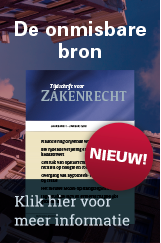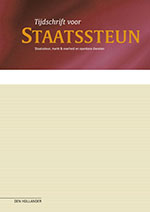Fiscal state aid and environmental protection. Analysis of a conceptual and practical problem
mr. M. Kleis and prof. mr. P.A. Nicolaides*
1. Introduction
‘The primary objective of State aid control in the field of environmental protection is to ensure that State aid measures will result in a higher level of environmental protection than would occur without the aid (...)’. This statement in the introduction of the Guidelines on State aid for Environmental Protection [EAG, OJ C 82, 1.4.2008, p. 1-33] seems to exclude the possibility of granting aid in the form of an exemption or reduction from
Artikel kopen € 79,00 excl. BTW
In plaats van abonneren kunt u dit artikel ook afzonderlijk kopen.
an environmental tax which, in itself, has the aim of improving the environmental protection level. This is because the tax exemption or reduction, would, in principle, decrease the impact of the tax and reduce its beneficial effect on the environment. Yet, the EAG allow for such measures if they fulfil certain conditions. Obviously, these conditions only have to be applied in cases in which the reduction or exemption in question can be qualified as a state aid measure.
The purpose of this article is twofold. First, it explains when a tax exemption or reduction can constitute state aid in the meaning of Article 107(1) of the Treaty on the Functioning of the European Union [TFEU]. There have been some surprising developments in recent jurisprudence which make it more difficult for Member States to use tax measures that do not fall within the scope of Article 107(1) TFEU. The reasons for this difficulty are explained in detail.
Second, the article reviews the decisional practice of the European Commission [Commission] in order to identify the issues which are critical in its assessment of tax measures that involve state aid. As will be shown, it is also difficult for Member States to prove the compatibility of their tax measures with the rules in the EAG.
The main finding of this article is that it has become harder for Member States to design tax measures that escape state aid control. In addition, it is hard for measures that are found to contain state aid to pass the compatibility tests of the EAG. In other words, it is simply more difficult to use tax exemptions to protect the environment. Yet, this is not necessarily an unwelcome outcome. The rationale of tax exemptions as a means of protecting the environment has always been questionable.
The structure of the article is as follows. In part 2, Commission decisions as well as judgements of EU courts are analysed with regard to the question whether or not an environmental tax measure can be considered to be state aid. It looks at the applicability of Article 107(1) to taxation in general, and focuses especially on the definition of ‘selectivity’ and its consequences for tax measures. The decisional practice of the Commission and the jurisprudence show, that with regard to the question whether or not a tax measure qualifies as state aid, the existence of selectivity is very often the determining factor.
In part 3 the article reviews the conditions under which those measures which are found to be state aid can be exempted. This includes a critical analysis of the justifications for allowing state aid in the form of exemptions or reductions from environmental tax. Finally, in the part 4, recent Commission decisions on environmental tax reductions or exemptions are examined in order to gauge the difficulty of the task of assessing the compatibility of tax measures with the EAG.
U heeft op dit moment geen toegang tot de volledige inhoud van dit product. U kunt alleen de inleiding en hoofdstukindeling lezen.
Wanneer u volledige toegang wenst tot alle informatie kunt u zich abonneren of inloggen als abonnee.



